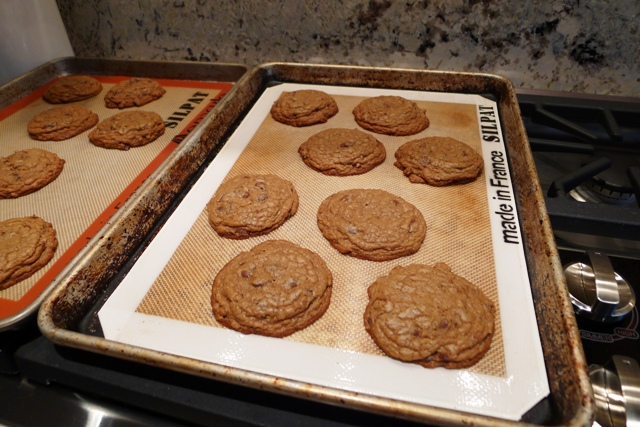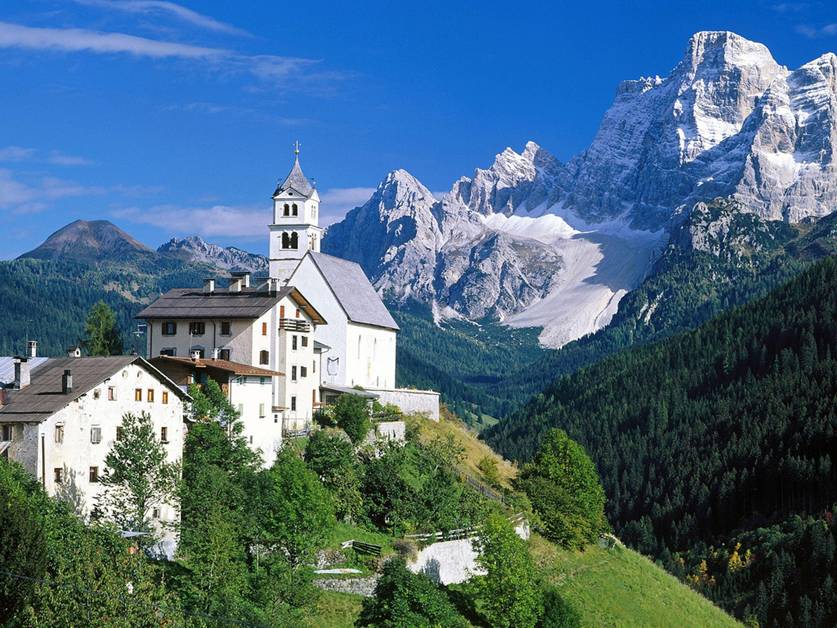There are few American dishes more classic than chocolate chip cookies. Traced back to the Nestlé company, which placed the recipe for Toll House cookies on the back of its chocolate chip bags in 1939, these delicacies have been baked by Americans for generations.
I’ve run across countless recipes and variations for chocolate chip cookies, but here’s one that struck my eye, for a number of reasons. The recipe is provided by Barbara Cosgriff, whom I met when I was Managing Director of The Nasdaq Stock Market. She and I instantly became great friends and after I left Wall Street to open Bellavitae, Barbara and her husband were constant guests.
Barbara shares her recipe as guest blogger on the Behind the Scenes at La Cuisine blog. “My mom made the delicious recipe on the chocolate chip bag. This recipe has evolved from my having baked thousands of them…and the little tweaks that come from experience.”
Click below for Barbara’s recipe:
BARBARA COSGRIFF’S SCRUMPTIOUS CHOCOLATE CHIP COOKIES
Why Barbara’s Recipe is so Special (and why it works!)
- Top-shelf ingredients. As any good cook will tell you, the best ingredients will result in the best recipe. No skimping here. You can order most everything online from La Cuisine.
- Chilled ingredients. As Barbara notes, if the batter is warm, the cookies will run (overspread).
- A combination of brown and white sugars. Although both sugars Barbara uses are “brown” (i.e., they contain molasses), the combination really represents a mix of brown and white sugars. Brown sugar will attract and retain water (“hygroscopic”), rendering the cookies chewy. Too much brown sugar and they will become, well, floppy. The white sugar (about a quarter to a third of the total sugar) will add firmness and crispiness.
- Baking soda. Many cookie recipes use baking powder, which acts as a leavener when the batter is exposed to heat. But baking powder is more appropriate for cakey cookies, not chewy cookies like chocolate chip. Moreover, a crispy exterior is almost impossible to achieve using baking powder. Baking powder would actually make the cookies crisp from the inside out, not a good thing here. The acid needed to activate the baking soda in this recipe comes from the brown sugar’s molasses.
- Low-protein flour. Barbara uses an Italian “Tipo 00” flour, which has a lower protein content. A high percentage of protein creates a harder (stronger) flour best suited for chewy, crusty breads and other yeast-risen products. Less protein produces a softer flour, best for tender and chemically leavened baked goods, like pie crusts, cakes, cookies, and biscuits.
- Don’t cream the butter. Creaming butter is a wonderful technique that encourages cakes to rise nicely, as well as cakey cookies. The sugar crystals act as extra beaters and will aerate the butter, enabling chemical leaveners to do their trick as the cake is baked.
- Let the batter rest. Allowing the cookie dough to rest will result in the sugars further dissolving. This dissolved sugar will caramelize more readily and produce a crisp exterior that is juxtaposed by a chewy interior with a complexity of butter, caramel, toffee, and chocolate.
High Altitude Adjustments
Of all baked goods, cookies are generally the easiest to make at high altitudes. However, once you reach 10,000 feet (as we are here inTaosSkiValley), things get a little tricky. Here are some adjustments I would make to Barbara’s recipe for readers at this altitude:
- Increase the flour by ¾ to 1 cup
- Reduce the India Light Muscovado Sugar by 2 ½ tablespoons (this prevents overspread)
- Increase the vanilla by 1 to 2 teaspoons (adds flavor to compensate for reduced sugar)
- Reduce baking temperature by 50°F – to 300°F
- Bake longer – an extra 4 to 5 minutes
.
Related:
- High Altitude Baking
- Pasta all’Uova Fatta in Casa: The Joy and Satisfaction of Making Homemade Egg Pasta (for more information regarding various flours and protein content)
.
Further Reading:
- Barbara Cosgriff’s Scrumptious Chocolate Chip Cookies
- Behind the Scenes at La Cuisine
- La Cuisine: The Cook’s Source
- La Cuisine: Online Store
.

